SCIENCE: Mycorrhizal Wealth of Karpaty / SPUN EXPEDITION
from the Bieszczady Forest to Science Labs and Big Data visualisations
Our team is actively engaged in the 2023 global scientific project SPUN (Society for the Protection of Underground Networks), one of 31 participating teams. Our focus lies in the south-eastern buffer zone of the Bieszczady National Park (BdPN), where expeditions have been conducted to explore mushroom communities’ species diversity. Soil DNA sampling in the rhizosphere of monumental beeches and firs, considered biodiversity hot spots, forms the basis of their research.
SPUN’s overarching goal is to create a global map of mycorrhizal species hot spots, promoting global conservation efforts for mycorrhizal ecosystems. These symbiotic fungi play a crucial role in maintaining terrestrial ecosystems, engaging in nutritional, anti-stress, and phytosanitary interactions. They also aid in retaining organic carbon in the soil, mitigating greenhouse gas emissions.
DNA samples were collected during two expeditions to the Bieszczady Mountains in May and October 2023, exploring ten locations with 35 monumental beeches and 35 firs. Piotr Klub, a forester and activist, guided the team, contributing to a comprehensive study advocating for the highest forms of protection for these areas.
Recognizing the urgency of biodiversity loss, the team advocates for fungi to be treated as a crucial element in Earth’s biodiversity protection alongside animals and plants. Their fungal biodiversity records can serve as reference data for other mountain forests, aiding in assessing degradation processes linked to forest management and climate change.
Our team employed advanced analytical tools like new generation sequencers, necessitating ecological knowledge, programming skills, and computational statistics. Bioinformatics students Maks Chmielewski and Mikołaj Charchuta played a vital role, proposing innovative solutions through the “Big Data Approach” to interpret large molecular datasets. Visualizations supported by solid statistical premises reveal groups of fungal species co-creating mountain forest habitats, suggesting divisions based on taxonomic affiliation and trophic habits. Their analyses relied on reference databases for assigning unique DNA sequences to fungal species and their lifestyles, employing metagenomics methodology. This approach efficiently identifies the composition of soil ecosystems, not only for fungal species but also for bacteria and microscopic eukaryotes. The lack of data describing the characteristics of some discovered DNA signatures highlights the ongoing growth of these databases and the continuous advancement of metagenomics.
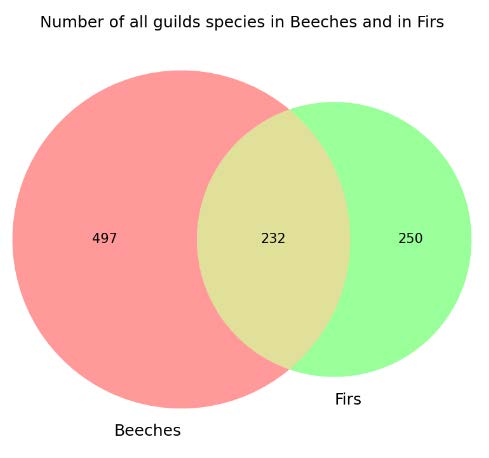

Left: identification of differences in the species composition of soil fungi accompanying monumental beeches or firs (Venn diagram). The numbers indicate fungal species specific to or common to both tree species.
Right: Venn diagram showing the differences and similarities in the sets of mycorrhizal fungi associated with beech or fir trees.
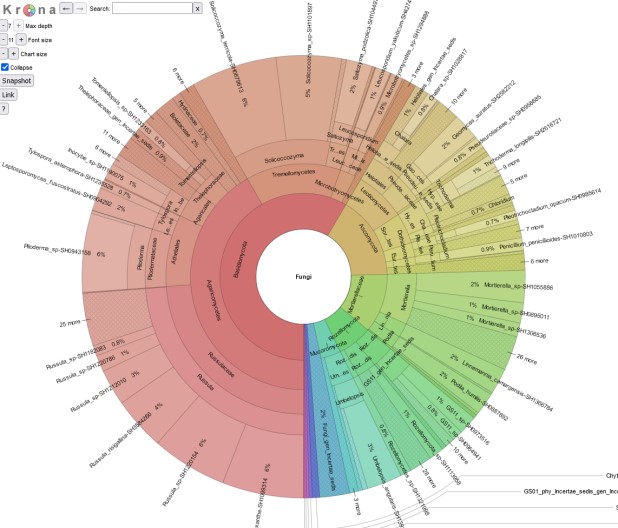
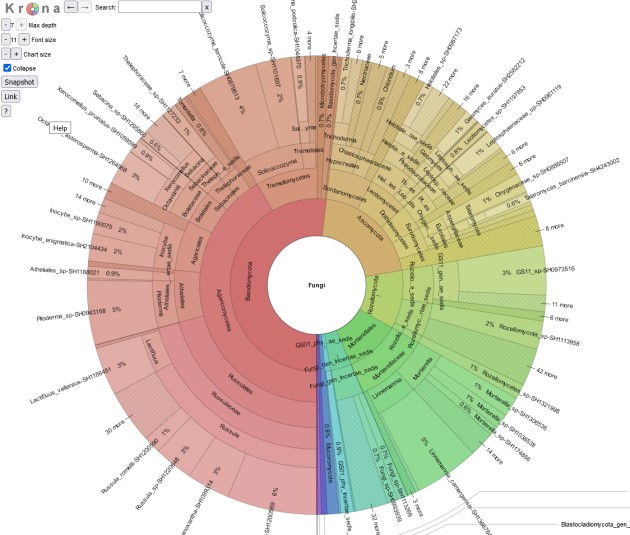
An interactive tool (Krona) to inspect the taxonomic composition and ecological functions of the species
that make up the mycobiomes of the rhizosphere of the studied trees

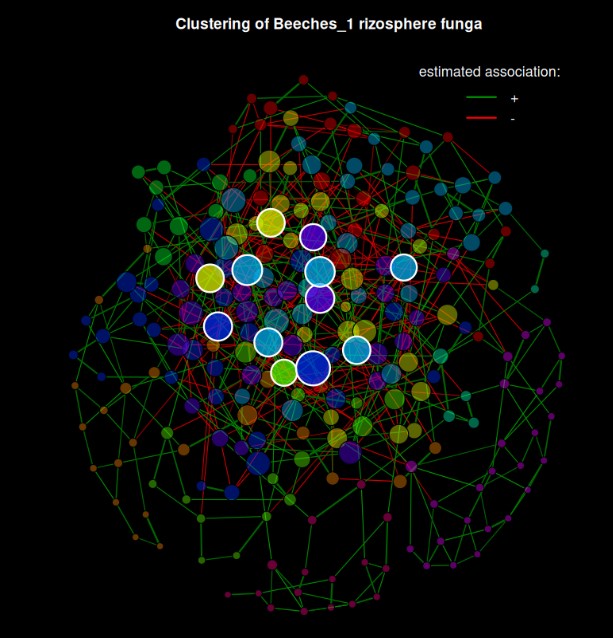
Graphs of fungal
networks, showing differences in mycobiome structures (fungal communities) for beech and fir
habitats. The green lines indicate the co-occurrence of species with a pattern
repeated in the samples from the 35 trees tested for the species.
The red lines indicate that the species
are mutually exclusive. Circles of the same
color are used to mark the so-called clusters, i.e. groups of species forming
an internally cooperating “clan”. A bioinformatics tool was used – NetCoMi (Network
Construction and Comparison for Microbiome Data) with the use of the similarity search
method (SPIEC-EASI).
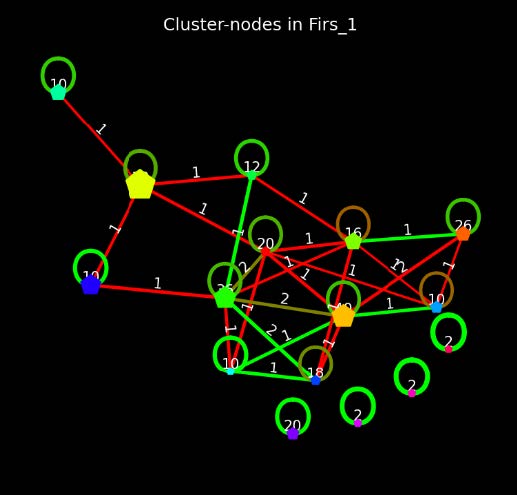
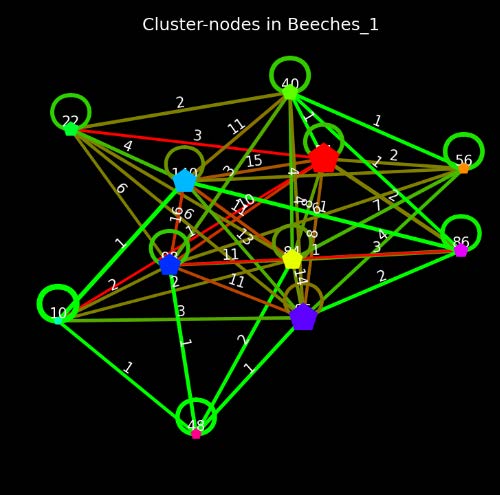
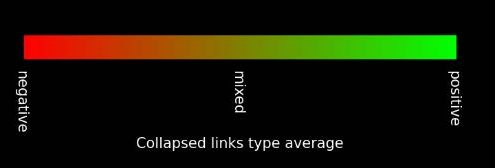
A simplified picture of the network showing the relationships only between individual groups of species, i.e. the network of occurrence of “clans”. Green lines – co-occurrence, red – mutual exclusion of clusters. The size of the symbol (pentagon) indicates whether the size of the “clan” (the number of species and their representatives) is larger or smaller in relation to the others.
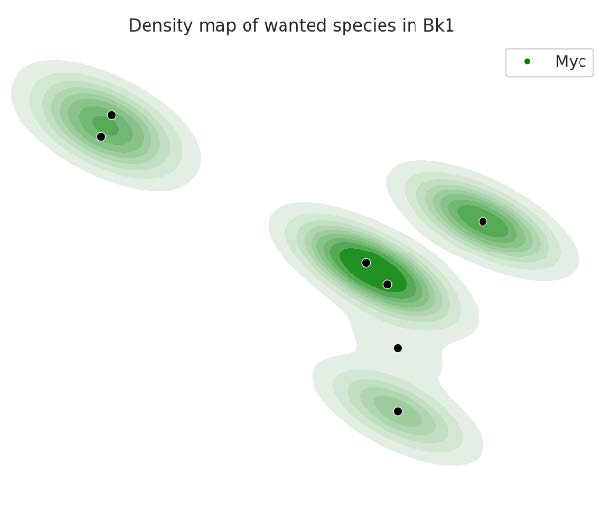

Exemplary
maps predicting the approximate density of mycorrhizal fungi
around monumental beeches or
firs that form two selected forest
habitats. The computational technique “2D Gaussian
kernel density
estimation” was used
Putative ecological categories in plant-fungal interactions
revealed by inferential network analysis
Mikołaj Charchuta, Maksymilian Chmielewski, Prof. Władysław Polcyn
Adam Mickiewicz University, Department of Plant Physiology,
Bioinformatics Section of Natural Sciences Club
We are proudly presenting an automated clusters analysis workflow of Tilia cordata rhizosphere mycobiomes. NGS data was obtained from nursery pots and seedlings established in situ, a year after planting in the forest. FUNGuildtool was used to divide species into six highly probable lifestyles.
Awarded poster was presented at the VII National Microbiologic Symposium in Lublin, Conference Centre 20-21.06.2023.



























